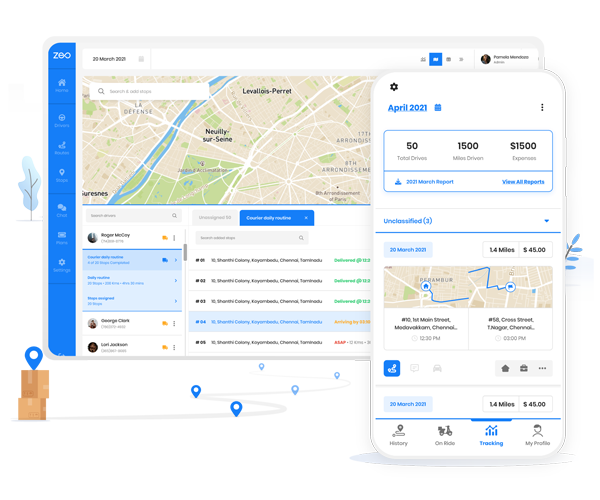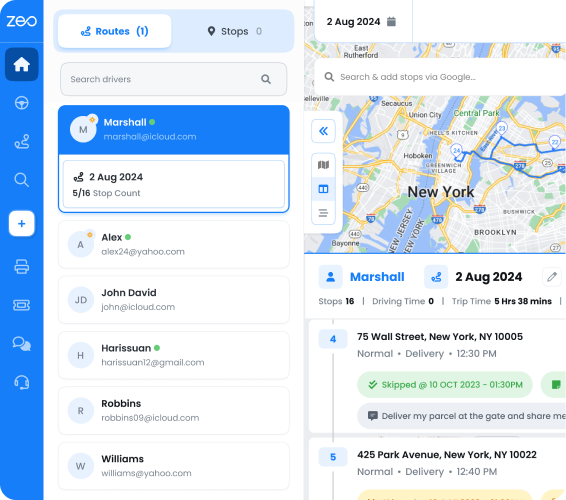Updated on: February 24, 2025
Logistics success depends on driver skills as much as it depends on fleet management. While fleet managers have to ensure that operational efficiency is right up to the mark, they also have to build a fleet that is motivated, skilled, and satisfied.
Letting go of skilled drivers is only going to have a negative impact on the operations. This makes driver retention a crucial strategy for fleet managers.
Let’s not mistake driver retention as merely keeping them on board. Retention strategies focus on creating an empowering and supportive work environment that motivates drivers to give their best.
But what really keeps drivers with a fleet?
It’s all about striking the right balance between workload, well-being, and providing tools that bring out their best. When fleet managers leverage technology to make drivers’ lives easier, they are already building a happy workforce.
Strategies to Enhance Driver Retention in 2025
The traditional methods won’t suffice to retain top talent in the logistics industry. Fleet managers need to go beyond by integrating smart technology into the workflows. They need to leverage technology to boost driver performance and make them feel their work matters for the organization’s long-term success.
-
Automated Scheduling for Better Work-Life Balance
One of the major reasons that push drivers out of a fleet is poor work-life balance. No driver wants to spend 15 hours behind the wheel. Add to it the tight delivery windows and unreasonable work hours. Drivers find themselves stretched too thin.
There is a dire need for a smarter way of assigning driver shifts. Fleet managers need to balance the workload and business needs with drivers’ well-being.
AI-powered route planners automate the scheduling process by considering various factors such as driver availability, shift timings, and workload distribution
Automated scheduling is the answer to driver burnout and ensuring their day is not stretched beyond work hours.
-
Streamlined Driver Management and Communication
Lack of communication makes drivers feel disconnected and isolated. Fleet managers must establish a smooth communication channel with their drivers to keep them engaged.
Providing a clear picture to drivers regarding the delivery expectations, route change updates, and other information they need for successful deliveries helps them perform better. AI-powered routing tools with mobile app for drivers make this possible without any hassle.
Fleet managers can inform them about any last-minute changes, new tasks, or potential roadblocks ahead to change the course. This reduces the stress and frustration for drivers.
increase fuel savings
Save 2 Hours on Deliveries, Everyday!
Optimize routes with our algorithm, reducing travel time and costs efficiently.
Get Started for FreeEffective communication in driver management helps them stay on track and also strengthens their trust in the management. Communication is the key to making them feel well-supported and bring out the best in them.
-
Real-Time Route Optimization to Save Drivers’ Time
Lack of proper route planning can result in drivers taking unnecessary detours and spending longer hours on the road, leading to stress, physical fatigue, and dissatisfaction.
How can fleet managers save drivers’ time and make their jobs less stressful? The answer is – effective route optimization. With route optimization, fleet managers can provide the most efficient route to their fleet.
Want to make your drivers feel more productive? Ensure they spend more time on delivery routes and less time figuring out the best route. Utilize AI-powered route planners to provide the shortest route possible that helps them complete all deliveries at the earliest.
-
Incentive Programs Linked to Performance and Efficiency
When employees know their efforts and performance will be noticed and rewarded, they get an extra push to go beyond the limits. Performance-based incentives are a great way to create a culture of healthy competition.
Fleet managers can leverage AI-powered logistics systems to extract valuable insights regarding driver performance, miles travelled, on-time delivery rates, and more.
These insights highlight the best performers in your team. Fleet managers can then create a reward system linked to the performance metrics.
When drivers are incentivized and appreciated for their work and commitment, they develop a sense of ownership of their jobs and strive harder to drive better results.
-
Driver Feedback and Continuous Improvement
You can’t improve something you are unaware of. The best way to understand how drivers feel about their jobs and what challenges they face is to listen. Listen to their feedback.
Fleet managers need to create an environment where drivers aren’t apprehensive to voice their concerns for the betterment of the fleet. Utilizing fleet management tools where drivers can provide instant feedback or raise concerns will help the managers understand and react quickly.
When their concerns are addressed and they witness change happening based on their inputs, drivers feel valued and involved in the decision-making process. Naturally, they develop a stronger connection with the fleet.
Employees drive business growth and success. While ensuring operational efficiency and streamlined processes is crucial, one can’t overlook the role employee satisfaction plays in sustainable growth.
High attrition rates will leave gaps in your fleet which can prove too large to fill at times. Prioritizing driver retention with the aforementioned strategies can prove to be the difference between short-term success and long-term sustainable growth.

Are you a fleet owner?
Want to manage your drivers and deliveries easily?
Grow your business effortlessly with Zeo Routes Planner – optimize routes and manage multiple drivers with ease.

increase fuel savings
Hassle Free Deliveries & Pickups!
Optimize routes with our algorithm, reducing travel time and costs efficiently.
Get Started for Free





















